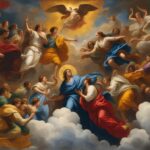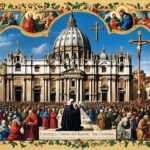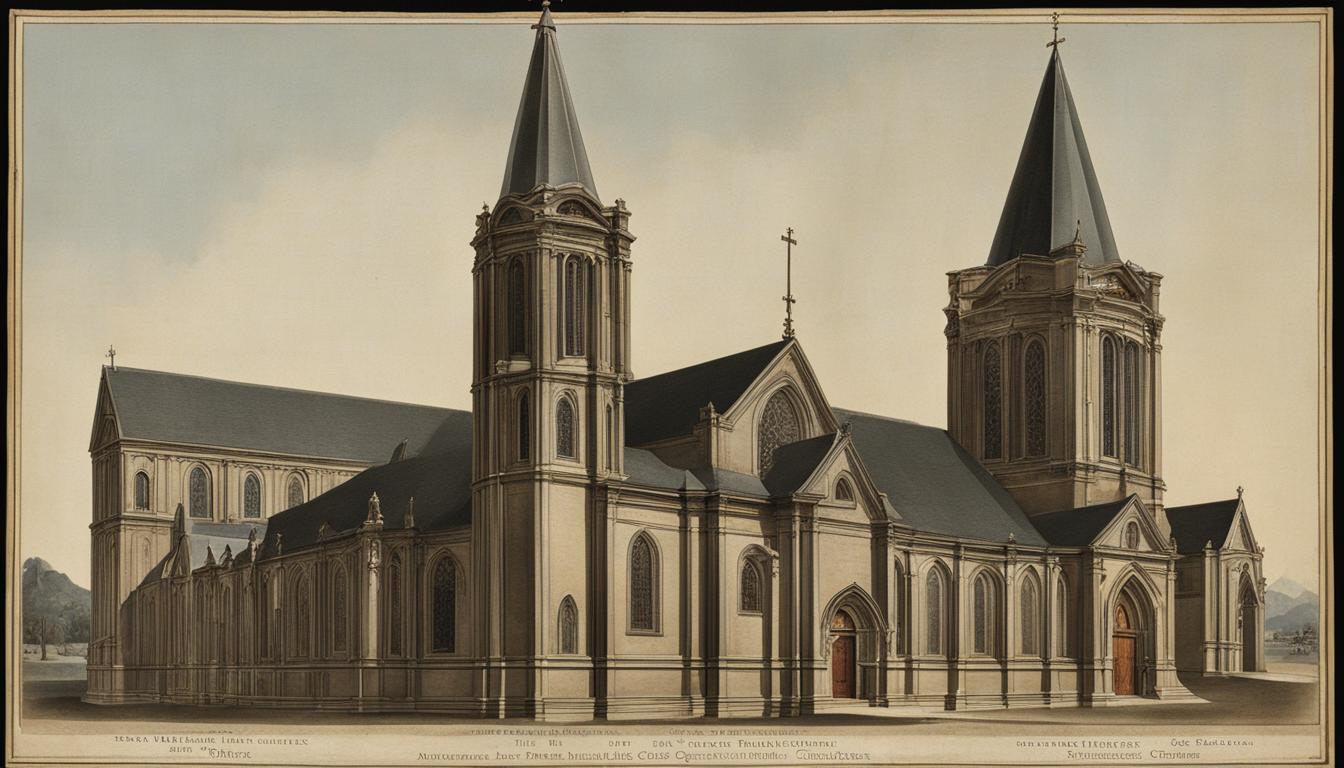The Korean Church has a rich and storied history that dates back to the Middle Ages. Christianity first found its way to the Korean peninsula through Nestorianism, a form of Christianity, and later through encounters with Catholicism. The first Protestant church in Korea was established in 1883, marking the beginning of a period of rapid growth for both Catholic and Protestant denominations. Today, the Korean Church continues to thrive, making a profound impact on the spiritual and cultural landscape of the country.
During the late Joseon Dynasty, Korean diplomats encountered Catholicism in China and brought back theological books, introducing Christianity to Korea. Catholicism faced persecution and was eventually outlawed, but it was reintroduced in the late 18th century by Korean believers and foreign priests. Protestantism, on the other hand, took root in Korea with the help of Scottish Presbyterian missionaries who interacted with Koreans in Manchuria.
The beliefs and doctrines of the Korean Christian churches align with mainstream Christianity. They believe in the divinity of Jesus Christ, the concept of salvation through faith, and the importance of living a moral and ethical life. The Catholic Church in Korea follows the teachings and doctrines of the Roman Catholic Church, while the Protestant churches have different denominations with their own specific beliefs and interpretations.
Sacraments and rituals are an integral part of the Korean Church’s worship. The Catholic Church in Korea observes the seven sacraments recognized by the Catholic Church worldwide, including baptism, confirmation, and the Eucharist. Protestant churches typically practice two sacraments: baptism and communion. These practices hold deep significance for Korean Christians and are cherished moments of spiritual connection.
The leadership and clergy in the Korean Church play a vital role in providing guidance and support to the congregation. In the Catholic Church, the Pope is the highest authority, followed by bishops and priests. Protestant churches have a hierarchical structure with pastors leading individual congregations and regional superintendents overseeing multiple churches.
Worship practices in the Korean Church are diverse, ranging from liturgical services to contemporary praise and worship. Hymns and songs hold a special place in Korean worship, reflecting the deep faith and devotion of the congregation. The sacred text of the Korean Church is the Bible, which serves as the foundation for their faith and practice.
The Korean Church is a diverse community with various denominations and sects. The Catholic Church in Korea is organized under the Archdiocese of Seoul, with numerous dioceses throughout the country. Protestant churches include Presbyterian, Methodist, Baptist, and Pentecostal denominations, among others. Each denomination has its own distinct beliefs and practices, catering to the diverse needs of Korean Christians.
Community and outreach are fundamental aspects of the Korean Church. Churches in Korea provide a sense of community and fellowship, offering support and opportunities for spiritual growth. They actively engage in outreach and ministry programs, addressing social issues and spreading their faith through missionary work. The Korean Church’s commitment to community and outreach reflects its dedication to making a positive difference in society.
The Korean Church’s architectural and artistic features vary, with some churches incorporating traditional Korean elements and others adopting Western styles. Catholic churches often feature Gothic-inspired architecture, while Protestant churches exhibit a range of styles. These churches are adorned with statues, paintings, and stained glass, creating a visually appealing and spiritually inspiring atmosphere.
Like any religious institution, the Korean Church faces contemporary issues and challenges. Adapting to a changing cultural landscape, engaging younger generations, and addressing the impact of modernity are some of the challenges they encounter. Despite these obstacles, the Korean Church remains resilient, striving to meet the needs of its members and maintain its relevance in today’s world.
Key Takeaways:
- The Korean Church has a long and diverse history, dating back to the Middle Ages and experiencing rapid growth in recent years.
- Beliefs and doctrines in the Korean Church are aligned with mainstream Christianity, following the core teachings of Jesus Christ.
- Sacraments and rituals are significant elements of worship, symbolizing spiritual connection and deepening faith.
- The Korean Church is led by a hierarchical clergy, including pastors, priests, and bishops.
- Community and outreach play an essential role in the Korean Church, fostering fellowship and spreading the message of Christianity.
- Architectural and artistic features within Korean churches reflect a commitment to beauty and aesthetics in worship.
- The Korean Church faces contemporary challenges, including cultural shifts and the need to engage younger generations.
Origins of Korean Church
The Korean church has a rich and fascinating history that can be traced back to its origins. The roots of Christianity in Korea can be attributed to the encounter of Korean diplomats with Catholicism during the late Joseon Dynasty while in China. These diplomats brought back theological books that introduced the teachings of Catholicism to the Korean people, marking the beginning of Christianity in Korea.
Despite facing official prohibition in 1758, Catholicism was reintroduced to Korea in 1785 by Korean Christians who were supported by French and Chinese priests. This revival of Catholicism played a significant role in the growth and development of the Korean church.
The Protestant church in Korea has its origins in the late 19th century, thanks to the efforts of Scottish Presbyterian missionaries. These missionaries interacted with Koreans residing in Manchuria, China, and played a fundamental role in spreading the message of Christianity to Korea.
The origins of the Korean church demonstrate the resilience and determination of the Korean people to embrace Christianity, even in the face of adversity. Through the efforts of Korean missionaries and interactions with missionaries from other countries, the Korean church has flourished and become an integral part of the religious landscape in Korea.
| Period | Key Events |
|---|---|
| Late Joseon Dynasty | Korean diplomats encounter Catholicism in China and bring back theological books |
| 1758 | Official prohibition of Catholicism in Korea |
| 1785 | Reintroduction of Catholicism in Korea by Korean Christians and French and Chinese priests |
| Late 19th Century | Establishment of the Protestant church in Korea with the help of Scottish Presbyterian missionaries |
Beliefs and Doctrines
The Korean Christian churches, both Catholic and Protestant, uphold the fundamental beliefs and doctrines rooted in mainstream Christianity. Central to their faith is the belief in the divinity of Jesus Christ, considering Him as the Son of God and the Savior of humanity. Korean Christians affirm the biblical concept of salvation through faith, emphasizing that salvation is a gift from God received by placing trust in Jesus Christ’s sacrificial death and resurrection.
Living a moral and ethical life is of utmost importance in the Korean church. Korean believers strive to embody virtues such as love, compassion, forgiveness, and integrity, following the teachings of Jesus Christ as presented in the Bible. They also place great emphasis on the Ten Commandments and other ethical guidelines outlined in Scripture, seeking to honor God in their thoughts, words, and deeds.
The Catholic Church in Korea adheres to the teachings and doctrines established by the Roman Catholic Church. This includes recognizing the authority of the Pope, the sacraments, the veneration of saints, and the importance of the Virgin Mary as the Mother of God. Meanwhile, the Protestant churches in Korea encompass various denominations, each with its particular beliefs and interpretations of Christian theology. These denominations may differ in worship practices, ecclesiastical structure, and specific theological emphases while holding the core tenets of Christianity as their foundation.

“Our faith in Jesus Christ guides us to live a life of love, grace, and compassion towards others. Through our beliefs and doctrines, we seek to honor God and reflect His character in our daily lives.”
| Catholic Church | Protestant Churches |
|---|---|
| Emphasizes the authority of the Pope and the Magisterium | Follow different denominational structures and leadership models |
| Recognizes sacraments such as baptism, confirmation, Eucharist, reconciliation, anointing of the sick, marriage, and holy orders | Embrace sacraments of baptism and communion as central to their faith |
| Hierarchy includes bishops, priests, and deacons | Leadership structure varies but often includes pastors, elders, and deacons |
| Devotion to the Virgin Mary and veneration of saints | Maintain a focus on Jesus Christ as the central figure of their faith |
While the beliefs and doctrines of the Korean church may differ between denominations, what unites them is the shared commitment to follow Christ’s teachings and spread the message of hope and redemption to all people.
Sacraments and Rituals
The sacraments and rituals hold deep significance in the Korean church, both in the Catholic and Protestant traditions. These sacred practices are integral to the worship and spiritual life of Korean Christians.
Baptism
Baptism is a widely practiced sacrament in the Korean church. It symbolizes the cleansing of sins and the initiation into the Christian faith. Through the act of baptism, individuals publicly declare their commitment to follow Jesus Christ and become part of the church community.
Communion
Communion, also known as the Lord’s Supper or the Eucharist, is another vital sacrament in the Korean church, particularly in Protestant denominations. It commemorates the Last Supper of Jesus Christ and signifies the unity of believers with Christ and with one another. During the communion service, bread and wine (or grape juice) are shared among the worshipers, representing the body and blood of Christ.
“In the act of baptism and communion, Korean Christians experience a profound sense of spiritual renewal and connection with their faith community. These rituals serve as reminders of God’s grace and love.”
These sacraments and rituals are not merely ceremonial; they are deeply rooted in the faith and spirituality of Korean Christians. Through baptism and communion, believers experience a profound sense of spiritual renewal, unity, and connection with their faith community.
| Sacraments | Korean Church |
|---|---|
| Baptism | Practiced in both Catholic and Protestant denominations |
| Communion | Practiced in Protestant denominations |
The table above summarizes the sacraments practiced in the Korean church, highlighting their prevalence in both Catholic and Protestant traditions.
The sacraments and rituals of the Korean church are not merely religious customs; they reflect the deep faith, devotion, and community bonds of Korean Christians. These practices provide a source of spiritual nourishment and guidance, shaping the worship experience and fostering a sense of belonging within the church.
Leadership and Clergy
The Korean church is led by a dedicated group of pastors, priests, and bishops who play a vital role in guiding the faith community. In the Catholic Church, the Pope serves as the highest authority, followed by bishops and priests who oversee the spiritual well-being of the church. The Protestant churches have a hierarchical structure, with pastors serving as the spiritual leaders of individual congregations. These pastors offer guidance, support, and pastoral care to their members, helping them navigate their spiritual journeys.
Pastors: Guiding the Flock
Pastors in the Korean church are committed to shepherding their congregations both spiritually and emotionally. They lead worship services, deliver sermons, and provide counseling to church members. With their knowledge of scripture and deep understanding of faith, pastors offer guidance, support, and prayer to those seeking solace or seeking answers to life’s challenges. They are dedicated to fostering a nurturing environment where individuals can deepen their relationship with God and find strength in their beliefs.
Priests and Bishops: Upholding Tradition
In the Catholic Church, priests and bishops hold positions of authority and responsibility. Priests administer sacraments, celebrate Mass, and provide spiritual guidance to their parishioners. Bishops, on the other hand, oversee multiple parishes and ensure that the teachings of the Church are upheld. They play a crucial role in maintaining the traditions and rituals of the Catholic faith while addressing the needs of their congregations.
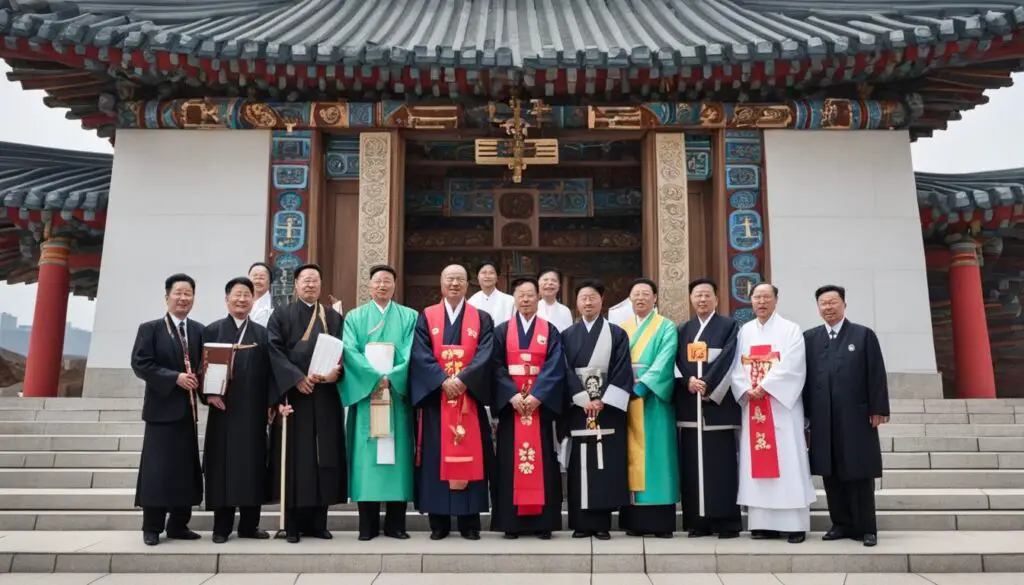
Leading with Faith and Integrity
Leadership in the Korean church requires not only knowledge and expertise but also a steadfast commitment to serving God and the community. The clergy, with their unwavering dedication and deep faith, inspire others to live out their beliefs and make a positive impact in the world. They provide moral guidance, offer support during times of crisis, and foster a sense of unity and belonging within the church.
“Leadership is not about being in charge. It is about taking care of those in your charge.” – Simon Sinek
The leadership and clergy in the Korean church embody this sentiment by cultivating an environment of love, compassion, and spiritual growth. They are pillars of the community, guiding the faithful on their spiritual journeys and leading by example.
| Korean Church Leadership Structure | Key Roles and Responsibilities |
|---|---|
| Catholic Church |
|
| Protestant Churches |
|
Worship Practices
Worship practices in the Korean church encompass a rich tapestry of traditions and expressions of faith. These practices vary between Catholic and Protestant traditions, each offering a unique worship experience for their congregations.
Worship in the Catholic Church
In the Catholic Church, liturgical worship takes center stage. The worship service follows a prescribed order known as the liturgy, which includes prayers, Scripture readings, and hymns. This structured approach ensures consistency and reverence in worship. The administration of sacraments, such as baptism and communion, is an integral part of Catholic worship services. These sacraments hold deep spiritual significance for believers, symbolizing the grace and presence of God in their lives.
During the worship service, the congregation actively participates through responsive prayers and hymn singing. Hymns in the Korean Catholic Church often blend traditional musical elements with local melodies, reflecting the rich cultural heritage of the Korean people. These hymns serve as powerful expressions of faith, uplifting the hearts of worshipers and fostering a sense of unity within the church.
Worship in Protestant Churches
Protestant worship services in the Korean church offer a more diverse range of expressions. From traditional liturgical services to contemporary praise and worship gatherings, there is a worship style to suit every believer’s preference. Regardless of the specific style, Protestant worship services emphasize the importance of heartfelt praise, prayer, and the proclamation of God’s Word.
In contemporary services, musical worship often takes center stage. The congregation engages in passionate singing, accompanied by a worship band or choir, creating an immersive atmosphere of adoration and praise. The songs chosen for worship reflect the deep faith and devotion of the congregation, with a blend of traditional hymns and contemporary Christian music.
The Role of Hymns
Hymns play a significant role in Korean church worship, invoking a sense of reverence and spiritual connection. These timeless compositions are carefully selected for their theological depth, poetic beauty, and ability to stir the hearts of worshipers. Through hymns, believers express their adoration, offer prayers, and reflect on the teachings of their faith.

The image above captures the essence of Korean church worship, where hymns serve as a bridge between heaven and earth, uplifting the spirits and inspiring worshipers to connect with God.
| Key Features | Korean Church Worship |
|---|---|
| Expression of Devotion | Hymns play a vital role in expressing the faith and devotion of the worshiping community. |
| Spiritual Unity | Hymn singing fosters a sense of unity and fellowship among believers, creating a sacred environment for worship. |
| Cultural Identity | The incorporation of traditional melodies and musical elements maintains a strong cultural identity within Korean church worship. |
| Divine Encounter | Through hymns, worshipers have the opportunity to encounter the presence of God, experiencing His grace and love. |
| Inclusive Worship | Korean church worship embraces believers of all ages, backgrounds, and musical preferences, offering a diverse and inclusive worship experience. |
Sacred Texts
The Korean church holds the Bible as its sacred text, encompassing the Old and New Testaments. Korean Christians deeply believe that the Bible is the inspired word of God, serving as the cornerstone of their faith and guiding their spiritual journey. Both Catholic and Protestant churches in Korea emphasize the significant role of studying and interpreting the Bible in their worship and personal growth.
“The Bible is our ultimate source of wisdom, truth, and guidance. It reveals God’s plan for salvation and provides us with the teachings and principles to live a righteous and fulfilling life.” – Pastor Kim
The study of the Bible holds immense importance in the Korean church, nurturing a deep understanding of God’s word and its application in daily life. It serves as a reliable compass, directing believers towards spiritual truth, comfort, and moral guidance.
Whether through individual reading, group Bible studies, or sermons, Korean Christians engage with the scriptures to deepen their relationship with God and strengthen their faith. The sacred texts offer solace during times of challenge, inspire hope, and provide a moral framework for navigating life’s complexities.
Furthermore, the Bible serves as a unifying force within the Korean church, fostering a shared sense of identity and community. Its teachings transcend denominational differences, bringing together Catholics and Protestants in their common belief and reverence for the scriptures.
The Role of Scripture in Korean Church Worship
During worship services, the Korean church emphasizes the importance of scripture in various ways. Sermons are typically based on biblical passages, with pastors delivering messages that shed light on the scriptures’ relevance to contemporary life. Through the study and interpretation of the Bible, believers gain a deeper understanding of God’s love, teachings, and purpose for their lives.
In addition to sermons, the Korean church incorporates scripture readings, prayers, and hymns that reflect the biblical truths and stories. The congregation actively engages with these elements, allowing the scriptures to evoke a sense of spiritual connection and renewal.
The Bible’s significance extends beyond worship services, permeating various aspects of the Korean church’s ministries, fellowship groups, and outreach initiatives. By embodying the messages of compassion, love, and justice found in the scriptures, Korean Christians strive to make a positive impact on their communities and share the transformative power of God’s word with others.
Next, we will explore the denominations and sects within the Korean church, highlighting their unique characteristics and contributions to the vibrant tapestry of Korean Christianity.

Denominations and Sects
The Korean Christian community is rich and diverse, encompassing a wide range of denominations and sects within the Catholic and Protestant traditions. These various religious groups offer unique perspectives, beliefs, and practices, catering to the diverse needs and preferences of Korean Christians.
The Catholic Church in Korea
The Catholic Church in Korea is organized under the Archdiocese of Seoul, which serves as the central governing body. The Archdiocese oversees multiple dioceses throughout the country, ensuring that the Catholic faith is accessible to people in different regions. This hierarchical structure provides a unified framework for Catholic worship and community engagement across Korea.
Protestant Denominations
Protestantism in Korea comprises a multitude of denominations, each with its own theological perspectives and traditions. Some of the prominent Protestant denominations in Korea include:
- Presbyterian: Known for its emphasis on biblical authority and Reformed theology, Presbyterian churches are widespread throughout Korea. They often adhere to a representative form of church governance, with elected elders playing a central role in decision-making.
- Methodist: With a focus on nurturing personal faith through small groups and accountability, the Methodist tradition has a significant presence in the Korean church. Methodists prioritize social justice and evangelism as essential aspects of Christian living.
- Baptist: Baptists emphasize the autonomy of individual churches and the importance of personal decision in accepting Jesus Christ as savior. They practice believer’s baptism and encourage active participation and engagement within the local church community.
- Pentecostal: Pentecostal churches in Korea emphasize the role of the Holy Spirit in believers’ lives, often emphasizing spiritual gifts and the practice of divine healing. Vibrant worship and emotional expressions of faith are characteristic of Pentecostal services.
These are just a few examples, and there are many other Protestant denominations in Korea, each contributing to the rich tapestry of the Korean church.
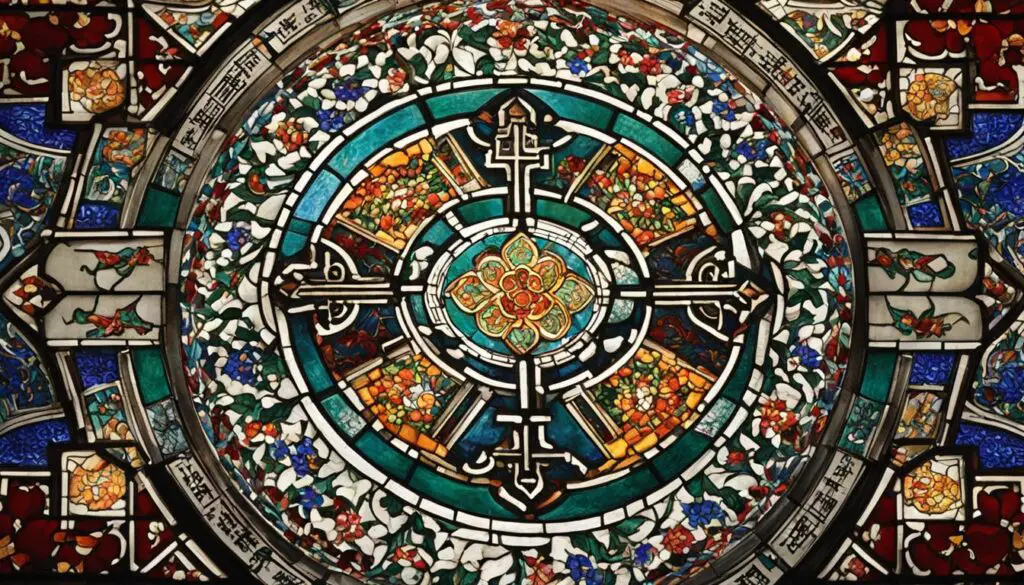
Table: Comparison of Korean Catholic Church and Korean Protestant Church
| Korean Catholic Church | Korean Protestant Church |
|---|---|
| Hierarchical structure under the Archdiocese of Seoul | Various denominations with autonomous local churches |
| Unified governance and centralized leadership | Churches governed independently or through interdenominational associations |
| Follows the teachings and doctrines of the Roman Catholic Church | Diverse theological perspectives influenced by different denominational traditions |
| Recognizes seven sacraments | Emphasizes baptism and communion as primary sacraments |
| Structured liturgical worship | Diverse worship styles ranging from traditional liturgy to contemporary services |
Each denomination and sect within the Korean Christian community provides its members with unique spiritual experiences and opportunities for growth. This diversity reflects the inclusive nature of the Korean church, fostering an environment where people can find a religious home that resonates with their beliefs and values.
Community and Outreach
In the Korean church, community and outreach are not just concepts, but integral components that define its purpose and mission. These churches strive to create a close-knit and supportive community for their members, fostering fellowship and providing a sense of belonging.
Within the Korean church community, members find support in times of joy and sorrow, developing lasting friendships and spiritual connections. It is a place where individuals can share their faith, journey together, and find strength in unity. Through various fellowship programs and activities, the Korean church encourages its members to support one another and grow spiritually.
However, the impact of the Korean church expands far beyond its immediate community. These churches actively engage in outreach and ministry programs to address social issues, meet the needs of the marginalized, and spread the message of Christianity. They understand the importance of making a positive impact on the world around them, reflecting the compassion and love of Jesus Christ.
Korean church ministries take many forms, ranging from providing food and shelter to the homeless, supporting local schools and orphanages, and offering counseling services to those in need. These ministries aim to uplift and empower individuals, demonstrating the transformative power of faith in action.
In addition, the Korean church recognizes the call to be a witness and share their faith with others. Through missionary work, both locally and internationally, they strive to bring hope and salvation to those who have not yet encountered the message of Christianity. By participating in educational programs, medical missions, and partnerships with other organizations, the Korean church actively contributes to global humanitarian efforts.
The Korean church’s commitment to community and outreach is a reflection of its core values and genuine desire to make a positive difference in society. By embracing the call to serve others and share the love of Christ, these churches exemplify the transformative power of faith in action.
In summary, the Korean church’s devotion to community and outreach ensures that their faith is not confined within the church walls. Through fellowship, ministry programs, and mission work, these churches demonstrate their commitment to making a lasting impact on society and sharing the message of Christianity with others.
Architectural and Artistic Features
Korean church architecture is a testament to the rich cultural heritage and spiritual expression of the Korean Christian community. Churches in Korea showcase a blend of traditional Korean architectural elements and Western influences, resulting in unique and visually striking buildings.
Many Catholic churches in Korea feature Gothic-inspired architecture, characterized by soaring spires, pointed arches, and intricate detailing. These magnificent structures evoke a sense of awe and reverence, inviting worshippers to connect with the divine. Stained glass windows, adorned with vibrant colors and intricate designs, create a mesmerizing play of light and symbolize the spiritual aspirations of the congregation.
Protestant churches in Korea exhibit a diverse range of architectural styles that reflect the individuality and character of each denomination. Some churches adhere to a minimalist and functional approach, emphasizing simplicity and clean lines. Others embrace a grand and ornate aesthetic, featuring domes, towers, and intricate carvings. These architectural marvels not only serve as places of worship but also stand as testaments to the creativity and devotion of the Korean Christian community.
Artistic features abound within Korean churches, enhancing the spiritual atmosphere and creating a sense of beauty and reverence. Statues depicting saints and biblical figures, paintings portraying sacred scenes, and intricate woodwork showcasing the craftsmanship of local artisans can often be found adorning the interiors of these churches. These artistic elements serve as visual reminders of the faith’s rich tradition and inspire worshipers to contemplate the divine.
Korean Church Architecture Examples
| Church | Location | Architectural Style |
|---|---|---|
| Tongdosa Temple | Yangsan, South Korea | Traditional Korean |
| Myeongdong Cathedral | Seoul, South Korea | Gothic Revival |
| Bupyeong Methodist Church | Incheon, South Korea | Contemporary |
| Hyundai Centum City Church | Busan, South Korea | Modern |
These architectural and artistic features exemplify the Korean church’s commitment to creating sacred spaces that inspire worship, foster a sense of awe, and reflect the profound spiritual journey of its members.
Contemporary Issues and Challenges
The Korean church, like any religious institution, faces various contemporary issues and challenges. These include the changing cultural landscape, the rise of secularism, the modern challenges of technology and globalization, and the need to engage and retain younger generations. The Korean church grapples with these issues while striving to maintain its relevance, bridge generational gaps, and adapt to the changing needs and concerns of its members.
Changing Cultural Landscape
The Korean church is navigating a changing cultural landscape, where traditional values and practices are being challenged by modern ideals. As Korean society becomes more diverse and multicultural, the church must find ways to embrace and accommodate different cultural backgrounds while staying true to its core beliefs.
Rise of Secularism
The rise of secularism poses a significant challenge to the Korean church. As more people in South Korea identify as non-religious or follow different belief systems, the church must find ways to effectively communicate its message and values in a secular society. It must also address skepticism and misconceptions about religious institutions.
Technological and Globalization Challenges
The rapid advancements in technology and the forces of globalization present unique challenges for the Korean church. It must find ways to engage with the younger generation, who are digitally native and expect a more interactive and technologically-driven approach to faith. Additionally, globalization brings new cultural influences that require the church to navigate cultural diversity while staying rooted in its own traditions.
Engaging and Retaining Younger Generations
One of the most pressing challenges for the Korean church is engaging and retaining younger generations. Many young Koreans find themselves disconnected from traditional religious institutions and seek alternative forms of spirituality. The church must adapt its practices, messages, and outreach efforts to appeal to the needs and interests of young people, ensuring they feel welcomed and valued within the church community.
| Contemporary Issues | Challenges |
|---|---|
| Changing Cultural Landscape | Embracing diversity while staying true to core beliefs |
| Rise of Secularism | Effectively communicating values and addressing skepticism |
| Technological and Globalization Challenges | Engaging younger generations and navigating cultural diversity |
| Engaging and Retaining Younger Generations | Adapting practices and messages to appeal to young people |
Conclusion
The history of the Korean church is a remarkable journey that showcases the resilience and vibrancy of the faith community in Korea. From its humble beginnings to its significant impact on society, the Korean church has played a pivotal role in shaping the spiritual and cultural landscape of the country.
With a rich tapestry of diverse denominations and a deep-rooted commitment to its beliefs and doctrines, the Korean church has provided a strong foundation of faith for its members. Through the celebration of sacraments and rituals, such as baptism and communion, Korean Christians have experienced a profound connection with their spiritual identity.
The leadership and clergy of the Korean church have been instrumental in guiding and nurturing the faith community. Pastors, priests, and bishops have dedicated themselves to providing spiritual guidance, conducting religious services, and offering pastoral care to ensure the spiritual well-being of their congregations.
Furthermore, the Korean church’s worship practices, sacred texts, and architectural features reflect its devotion to God and its desire to create a sacred space for worship. Hymns and prayers, inspired by the sacred scriptures, are sung and recited fervently, fostering a deep sense of spiritual connection within the congregation. The architectural magnificence of the churches, with their towering spires and intricate stained glass, symbolize the enduring faith of the Korean church.
In addition to its spiritual impact, the Korean church is deeply committed to community and outreach. Through fellowship, ministry, and various outreach programs, the church extends its love and compassion to the wider community. By addressing social issues, providing humanitarian aid, and engaging in missionary work, the Korean church continues to make a positive difference in the lives of its members and the communities it serves.
The Korean church’s history and impact are an inspiring testament to its unwavering faith, vibrant traditions, and the enduring legacy it leaves behind. It continues to embrace its rich heritage while adapting to contemporary challenges, bridging generational gaps, and striving to remain relevant in an ever-changing world. The Korean church stands as a beacon of hope, offering solace, guidance, and a sense of belonging to all who seek spiritual nourishment and strength.
FAQ
What is the history of the Korean church?
The practice of Christianity in Korea dates back to the Middle Ages when Nestorianism, a form of Christianity, spread to the peninsula. Catholicism was introduced during the late Joseon Dynasty period when Confucian scholars encountered it in China. The first Protestant church in Korea, Sorae Church, was established in 1883. The growth of both denominations was gradual before 1945, but rapid growth ensued after the Korean War. As of 2015, 27.6% of the South Korean population is Christian.
What are the origins of the Korean church?
The origins of the Korean church can be traced back to Korean diplomats who encountered Catholicism in China during the late Joseon Dynasty. They brought back theological books and began disseminating the information, introducing Christianity to Korea. Catholicism was officially outlawed in 1758, but it was reintroduced in 1785 by Korean Christians and French and Chinese priests. The Protestant church in Korea was established in the late 19th century, with the help of Scottish Presbyterian missionaries who interacted with Koreans in Manchuria.
What are the beliefs and doctrines of the Korean church?
The Korean Christian churches, both Catholic and Protestant, follow the core beliefs and doctrines of mainstream Christianity. They believe in the divinity of Jesus Christ, the concept of salvation through faith, and the importance of living a moral and ethical life. The Catholic Church in Korea follows the teachings and doctrines of the Roman Catholic Church, while the Protestant churches have different denominations with their own specific beliefs and interpretations of Christianity.
What sacraments and rituals are practiced in the Korean church?
The Catholic Church in Korea follows the seven sacraments recognized by the Catholic Church worldwide, including baptism, confirmation, Eucharist, reconciliation, anointing of the sick, marriage, and holy orders. Protestant churches in Korea typically practice two sacraments: baptism and communion (also known as the Lord’s Supper or the Eucharist).
What is the leadership structure in the Korean church?
The leadership and clergy in the Korean church consist of pastors, priests, and bishops. In the Catholic Church, the Pope is the highest authority, followed by bishops and priests. The Protestant churches have a hierarchical structure with pastors leading individual congregations and regional superintendents overseeing multiple churches.
What are the worship practices in the Korean church?
Worship practices in the Korean church vary between Catholic and Protestant traditions. In the Catholic Church, liturgical worship is conducted following a prescribed order of service, including prayers, Scripture readings, hymns, and the administration of sacraments. Protestant worship services are more diverse, ranging from traditional liturgical services to contemporary praise and worship gatherings. Hymns and songs play a significant role in Korean church worship.
What is the sacred text of the Korean church?
The sacred text of the Korean church is the Bible, specifically the Old and New Testaments. Korean Christians believe that the Bible is the inspired word of God and serves as the foundation for their faith and practice.
What denominations and sects are there in the Korean church?
The Korean Christian community is diverse, with various denominations and sects within the Catholic and Protestant traditions. The Catholic Church in Korea is organized under the Archdiocese of Seoul, with multiple dioceses throughout the country. Protestant churches in Korea include Presbyterian, Methodist, Baptist, and Pentecostal denominations, among others.
How does the Korean church engage with the community and outreach?
Community and outreach are essential aspects of the Korean church. Churches in Korea provide a sense of community and fellowship for their members, offering support, friendship, and opportunities for spiritual growth. They also actively engage in various outreach and ministry programs, addressing social issues, providing humanitarian aid, and spreading their faith through missionary work.
What are the architectural and artistic features of Korean churches?
Korean church architecture varies, with some churches adopting traditional Korean architectural elements, while others follow Western architectural styles. Many Catholic churches in Korea feature Gothic-inspired architecture, with soaring spires and stained glass windows. Protestant churches exhibit a more diverse range of artistic styles. Artistic features such as statues, paintings, and other artwork can often be found within Korean churches.
What are the contemporary issues and challenges facing the Korean church?
The Korean church, like any religious institution, faces various contemporary issues and challenges. These include the changing cultural landscape, the rise of secularism, the modern challenges of technology and globalization, and the need to engage and retain younger generations. The Korean church grapples with these issues while striving to maintain its relevance and adapt to the changing needs and concerns of its members.



